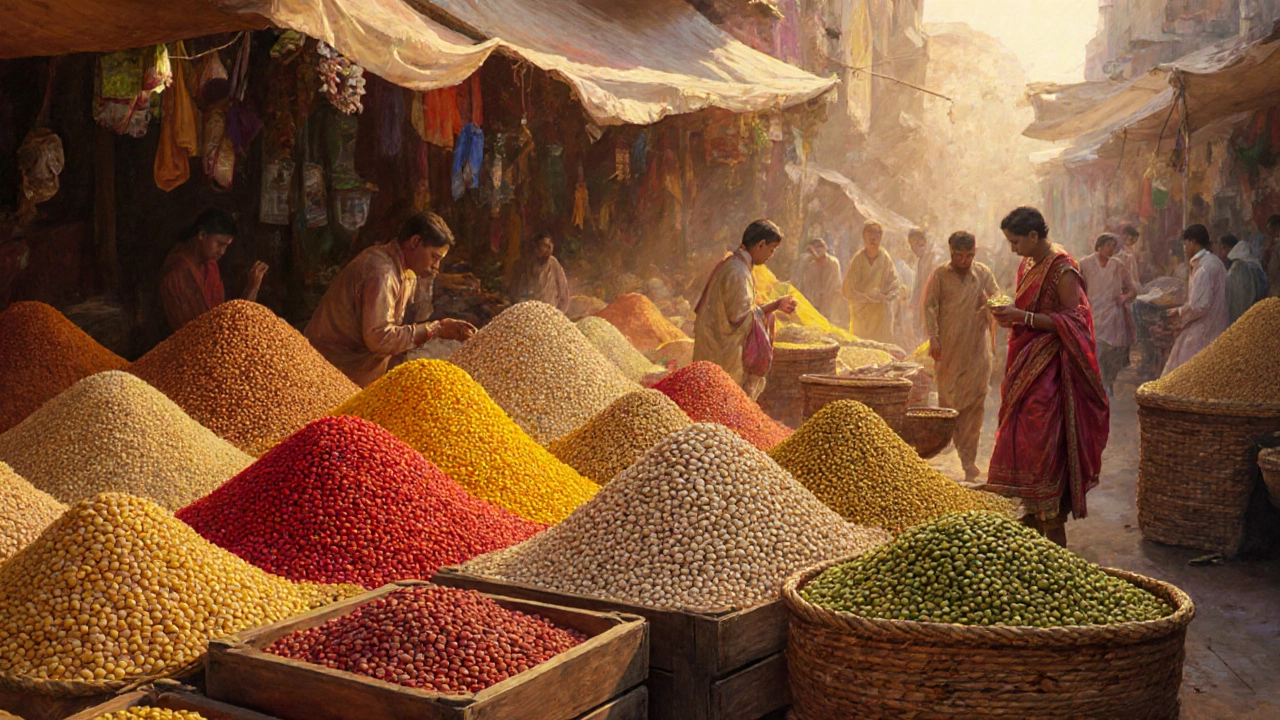Difference Between Dal and Lentils
When working with Dal, a split or whole pulse that forms the backbone of many Indian dishes. Also known as lentil stew, it provides protein, fiber, and a comforting texture, you’ll often hear people mix it up with Lentils, the small, lens‑shaped legumes grown worldwide. Both belong to the broader family of Pulses, edible seeds of leguminous plants harvested for dry use, but the way we talk about them in the kitchen can be very different. Understanding the difference between dal and lentils helps you pick the right ingredient, avoid common cooking mishaps, and get the best flavor and nutrition from each dish.
At a taxonomic level, dal and lentils sit in the same plant group – the Fabaceae family – yet they split into distinct categories. Legumes, the broader class that includes beans, peas, and peanuts cover everything from large beans to tiny chickpeas. Within legumes, Pulses are the dry, harvested seeds you store in your pantry. Dal, however, is a culinary label used mainly in Indian Cooking, the diverse regional food traditions of the Indian subcontinent. It groups together split peas, split mung beans, split urad beans, and even whole lentils that are prepared in a specific way – often soaked, boiled, and spiced. Lentils, on the other hand, refer to the raw seed itself, whether you plan to keep it whole, split it, or roast it. So while all dal are pulses, not every pulse you call a lentil ends up as dal on your plate.
Nutrition and cooking technique further separate the two. Whole lentils typically retain a firmer bite and need a longer simmer (about 20‑30 minutes for red lentils, 40‑45 minutes for brown). Split dal cooks faster because the outer skin is removed, shaving off minutes and making it easier to achieve that creamy texture prized in dishes like sambar or dal tadka. Water‑to‑dal ratios also differ: a common rule is 1 part dal to 3 parts water for stovetop, while whole lentils often need 1:4 to stay soft without turning mushy. Soaking pulses overnight reduces cooking time and improves digestibility, a tip that applies to both dal and lentils but is especially key for larger beans like urad. Nutritionally, both bring protein (about 18‑25 g per 100 g dry) and fiber, but split dal may have a slightly higher glycemic index because the fiber shell is gone. Knowing these details lets you match the right type to the right recipe – whether you want a quick, thick dal for a weekday dinner or a hearty lentil stew that stands on its own.
Now that you see how dal, lentils, pulses, legumes, and Indian cooking intersect, you’ll spot the right ingredient faster and avoid the guesswork that trips many home cooks. Below you’ll find articles that walk you through everything from soda in dosa batter to how much dal you need for two people, from soaking urad dal overnight to mastering the perfect chicken marinade. Each piece adds a layer to the bigger picture, giving you practical tips, tasty variations, and the science behind why those differences matter. Dive in and start cooking with confidence!

Dal vs Lentils: Key Differences Explained
Learn the key botanical, nutritional, and culinary differences between dal and lentils, plus buying, cooking, and storage tips for each.
- Chutney Recipes (13)
- Healthy Living (12)
- General (11)
- Easy Indian Recipes (9)
- Chicken Curry Recipes (9)
- Paneer Recipes (8)
- Healthy Indian Snacks (8)
- Dal Recipes (7)
- Street Food (7)
- Dosa Recipes (7)
-
Can I Make Paneer from Broken Milk?
4 Apr 2025 -
British Chutney Explained: Its Flavors, Origins, and Modern Twists
6 Aug 2025 -
A Guide to Very Mild Indian Dishes: Flavors Without the Fire
25 Jul 2025 -
What Kind of Milk Do They Drink in India? Popular Choices Explained
9 May 2025 -
Thick vs Thin Roti: The Ultimate Guide to Perfect Indian Flatbread
1 Aug 2025
29.09.25
Kaia Binari
0